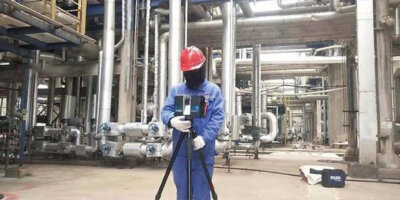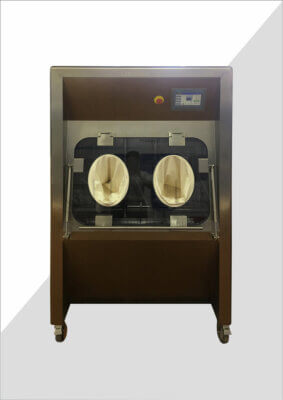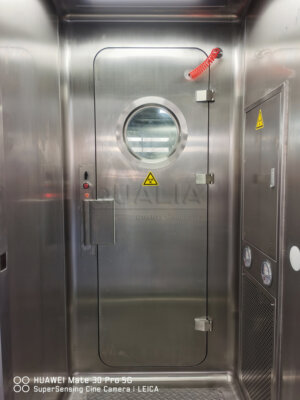In the ever-evolving landscape of pharmaceutical manufacturing, ensuring the safety and efficacy of production processes is paramount. One crucial aspect of this is the proper operation of Effluent Decontamination Systems (EDS). These systems play a vital role in managing and treating liquid waste in pharmaceutical settings, particularly in biosafety level 2, 3, and 4 environments. As the industry continues to advance, the need for well-trained EDS operators has never been more critical.
The pharmaceutical industry faces increasing pressure to maintain the highest standards of safety and compliance while optimizing operational efficiency. Proper training of EDS operators is at the forefront of meeting these challenges. From understanding the intricacies of waste treatment processes to mastering the latest technological advancements, EDS operators must be equipped with a comprehensive skill set to ensure the safe and effective management of pharmaceutical effluents.
As we delve into the training requirements for EDS operators in pharmaceutical settings, we'll explore the key components of effective training programs, regulatory considerations, and best practices that are shaping the future of this critical role. By understanding these elements, pharmaceutical companies can better prepare their workforce to meet the demands of modern effluent management and contribute to the overall safety and success of their operations.
"Effective training of EDS operators is essential for maintaining the integrity of pharmaceutical manufacturing processes and ensuring environmental safety."
Table: Key Components of EDS Operator Training
| Training Component | Description | Importance |
|---|---|---|
| System Operation | Understanding EDS equipment and controls | High |
| Safety Protocols | Handling hazardous materials and emergency procedures | Critical |
| Regulatory Compliance | Knowledge of relevant guidelines and standards | Essential |
| Quality Assurance | Maintaining system performance and documentation | High |
| Troubleshooting | Identifying and resolving operational issues | Important |
| Continuous Improvement | Staying updated with industry advancements | Moderate |
What are the core competencies required for EDS operators?
The foundation of any effective EDS operator training program lies in identifying and developing core competencies. These essential skills and knowledge areas form the basis for safe and efficient operation of effluent decontamination systems in pharmaceutical settings.
Core competencies for EDS operators encompass a wide range of technical and soft skills. These include a thorough understanding of waste treatment processes, proficiency in operating EDS equipment, knowledge of safety protocols, and the ability to interpret and apply regulatory guidelines.
Developing these competencies requires a comprehensive training approach that combines theoretical knowledge with hands-on experience. Operators must be able to confidently navigate the complexities of EDS operation while maintaining strict adherence to safety and quality standards.
"EDS operators must possess a unique blend of technical expertise and regulatory awareness to effectively manage pharmaceutical effluents."
| Core Competency | Training Focus | Assessment Method |
|---|---|---|
| Technical Knowledge | EDS principles and processes | Written exams |
| Equipment Operation | Hands-on system control | Practical evaluations |
| Safety Awareness | Risk management and PPE use | Scenario-based tests |
| Regulatory Compliance | GMP and environmental regulations | Compliance audits |
| Documentation Skills | Record-keeping and reporting | Documentation review |
How does regulatory compliance shape EDS operator training?
In the highly regulated pharmaceutical industry, compliance with various standards and guidelines is a critical aspect of EDS operation. Training programs must be designed to ensure that operators are well-versed in the regulatory landscape that governs effluent decontamination processes.
Regulatory bodies such as the FDA, EMA, and WHO have established stringent requirements for pharmaceutical waste management. EDS operator training must cover these regulations in detail, including Good Manufacturing Practices (GMP), environmental protection standards, and specific guidelines related to biosafety levels.
Compliance-focused training not only helps operators understand their legal obligations but also instills a culture of responsibility and accountability. This aspect of training is crucial for maintaining the integrity of pharmaceutical operations and protecting public health and the environment.
"Regulatory compliance training is not just about following rules; it's about fostering a mindset of quality and safety in EDS operations."
| Regulatory Aspect | Training Content | Frequency of Updates |
|---|---|---|
| GMP Guidelines | Waste handling procedures | Annual |
| Environmental Regulations | Effluent quality standards | Bi-annual |
| Biosafety Protocols | Containment measures | Quarterly |
| Documentation Requirements | Record-keeping practices | Monthly |
| Audit Preparedness | Mock inspections | Semi-annual |
What role does hands-on training play in preparing EDS operators?
While theoretical knowledge is essential, hands-on training is where EDS operators truly develop the skills and confidence needed to perform their roles effectively. Practical experience with QUALIA EDS systems and other industry-standard equipment is invaluable in preparing operators for real-world scenarios.
Hands-on training typically involves simulated operations, troubleshooting exercises, and supervised practice sessions. These activities allow operators to familiarize themselves with the equipment, practice standard operating procedures, and learn how to respond to various situations that may arise during EDS operation.
Through hands-on training, operators can develop muscle memory for routine tasks, improve their decision-making skills in challenging situations, and gain a deeper understanding of the system's intricacies. This practical experience is crucial for building confidence and competence in EDS operation.
"Effective hands-on training bridges the gap between theory and practice, enabling EDS operators to perform confidently in real-world pharmaceutical settings."
| Training Activity | Learning Objective | Duration |
|---|---|---|
| Equipment Operation | System startup and shutdown | 2 days |
| Maintenance Procedures | Routine checks and cleaning | 1 day |
| Troubleshooting Simulations | Problem identification and resolution | 3 days |
| Emergency Response Drills | Handling system failures | 1 day |
| Process Optimization | Fine-tuning system parameters | 2 days |
How can technology enhance EDS operator training?
In the digital age, technology plays an increasingly important role in enhancing the effectiveness of EDS operator training. From virtual reality simulations to online learning platforms, technological advancements are revolutionizing the way operators are prepared for their responsibilities.
Virtual reality (VR) and augmented reality (AR) technologies offer immersive training experiences that allow operators to practice complex procedures in a safe, controlled environment. These tools can simulate various scenarios, including emergency situations, without the risks associated with live training on actual equipment.
Additionally, e-learning platforms provide flexible, on-demand access to training materials, allowing operators to refresh their knowledge or learn new skills at their own pace. These digital resources can be easily updated to reflect the latest industry standards and best practices.
"Leveraging advanced technologies in EDS operator training can significantly improve learning outcomes and operational readiness."
| Technology | Application in Training | Benefits |
|---|---|---|
| Virtual Reality | System operation simulations | Safe practice of high-risk scenarios |
| E-learning Platforms | On-demand knowledge modules | Flexible, self-paced learning |
| Augmented Reality | Maintenance procedure guides | Real-time assistance during tasks |
| Data Analytics | Performance tracking | Personalized training recommendations |
| Mobile Apps | Quick reference guides | Instant access to procedures |
What continuous education strategies ensure long-term competency?
The pharmaceutical industry is constantly evolving, with new technologies, regulations, and best practices emerging regularly. To maintain competency, EDS operators must engage in continuous education and professional development throughout their careers.
Continuous education strategies may include regular refresher courses, attendance at industry conferences, participation in webinars, and engagement with professional associations. These activities help operators stay current with industry trends and regulatory changes.
Implementing a structured continuous improvement program ensures that operators' skills remain sharp and relevant. This may involve periodic assessments, skill gap analyses, and targeted training interventions to address any identified areas for improvement.
"Continuous education is not just a requirement; it's a commitment to excellence in EDS operation and pharmaceutical safety."
| Education Strategy | Frequency | Focus Area |
|---|---|---|
| Refresher Courses | Annually | Core competencies |
| Industry Conferences | Bi-annually | Emerging technologies |
| Webinar Series | Monthly | Regulatory updates |
| Peer Learning Sessions | Quarterly | Best practice sharing |
| Certification Programs | Every 2-3 years | Advanced skills |
How do safety protocols integrate into EDS operator training?
Safety is paramount in pharmaceutical manufacturing, and EDS operations are no exception. Comprehensive training in safety protocols is essential to protect operators, maintain the integrity of the effluent treatment process, and safeguard the environment.
EDS operator training must cover a wide range of safety topics, including proper use of personal protective equipment (PPE), handling of hazardous materials, emergency response procedures, and containment protocols specific to different biosafety levels.
Integrating safety training into all aspects of EDS operation ensures that safety becomes second nature to operators. This includes regular safety drills, risk assessments, and the cultivation of a safety-first culture within the organization.
"A robust safety training program is the cornerstone of responsible EDS operation in pharmaceutical settings."
| Safety Aspect | Training Method | Evaluation Criteria |
|---|---|---|
| PPE Usage | Practical demonstrations | Proper donning and doffing |
| Hazardous Material Handling | Simulated exercises | Adherence to protocols |
| Emergency Procedures | Role-playing scenarios | Response time and accuracy |
| Risk Assessment | Case studies | Identification of potential hazards |
| Incident Reporting | Documentation practice | Completeness of reports |
What metrics can be used to evaluate the effectiveness of EDS operator training?
Assessing the impact and effectiveness of EDS operator training is crucial for continuous improvement and ensuring that training programs meet the needs of both operators and the organization. Various metrics can be employed to evaluate training outcomes and identify areas for enhancement.
Key performance indicators (KPIs) for EDS operator training may include quantitative measures such as test scores, incident rates, and system uptime. Qualitative assessments, such as operator confidence levels and supervisor feedback, also provide valuable insights into training effectiveness.
Regular evaluation of these metrics allows training programs to be refined and optimized, ensuring that they continue to produce highly skilled and competent EDS operators capable of meeting the challenges of pharmaceutical effluent management.
"Effective measurement of training outcomes is essential for maintaining high standards of EDS operation and driving continuous improvement in pharmaceutical settings."
| Evaluation Metric | Measurement Method | Target |
|---|---|---|
| Knowledge Retention | Post-training assessments | 90% pass rate |
| Operational Efficiency | System performance data | 95% uptime |
| Safety Compliance | Audit results | Zero major findings |
| Incident Rate | Tracking of operational errors | <1% per month |
| Operator Confidence | Self-assessment surveys | 85% confidence level |
Conclusion
The training of EDS operators in pharmaceutical settings is a multifaceted and critical endeavor that underpins the safety, efficiency, and compliance of effluent management processes. As we've explored, effective training encompasses a wide range of elements, from core competencies and regulatory compliance to hands-on experience and continuous education.
By implementing comprehensive training programs that leverage modern technologies, emphasize safety, and adapt to evolving industry standards, pharmaceutical companies can ensure that their EDS operators are well-prepared to meet the challenges of their roles. The integration of practical skills, theoretical knowledge, and a strong foundation in safety and compliance creates a workforce capable of maintaining the highest standards of effluent decontamination.
As the pharmaceutical industry continues to advance, the role of EDS operators will only grow in importance. Investing in robust training programs not only benefits individual operators but also contributes to the overall success and sustainability of pharmaceutical operations. By maintaining a commitment to excellence in EDS operator training, companies can safeguard their processes, protect the environment, and uphold the critical standards that define the pharmaceutical industry.
External Resources
Workforce Training for Pharmaceutical Manufacturing Operators – This article discusses the current state of training in the pharmaceutical industry, highlighting the need for more effective and modern training methods, particularly for operators in high-risk manual process steps.
WHO Good Manufacturing Practices for Pharmaceutical Products – This WHO document provides guidelines on qualification and validation in pharmaceutical production, including the importance of training operators and maintaining training records.
ASHP Guidelines: Minimum Standard for Pharmacies in Hospitals – While focused on hospital pharmacies, these guidelines include sections on the training and competencies required for pharmacy technicians, which can be relevant to the broader context of pharmaceutical settings.
FDA Guidance for Industry: Process Validation – This FDA guidance document on process validation is crucial for understanding the training requirements for operators in pharmaceutical settings to ensure compliance with regulatory standards.
PDA Training and Education – PDA provides various resources, including training programs and guidelines, that are relevant to the education and training of operators in pharmaceutical settings, focusing on best practices and industry standards.
Related Contents:
- BioSafe EDS: Batch-Continuous Treatment Systems
- BioSafe EDS: Thermal Systems for Effluent Treatment
- Sterile Effluent Cooling: BioSafe’s EDS Technology
- Waste Effluent Stream Management: BioSafe EDS
- Mastering Safety: Essential Training for EDS Operators
- Continuous Flow EDS: BioSafe’s Efficient Solutions
- EDS: Revolutionizing Laboratory Safety Protocols
- BSL-4 Effluent Treatment: BioSafe’s Ultimate EDS
- Mobile EDS: BioSafe’s Versatile Decontamination Units






























